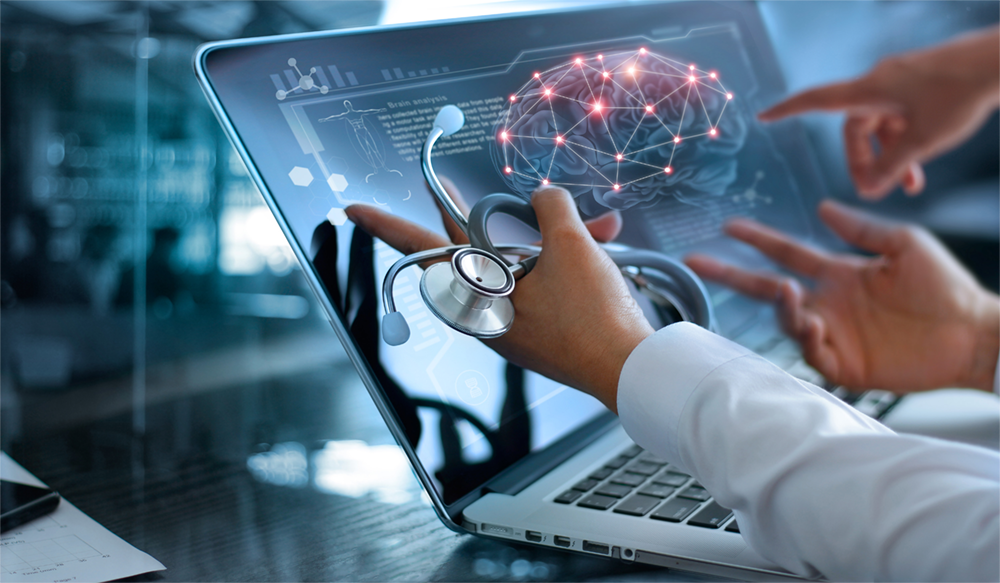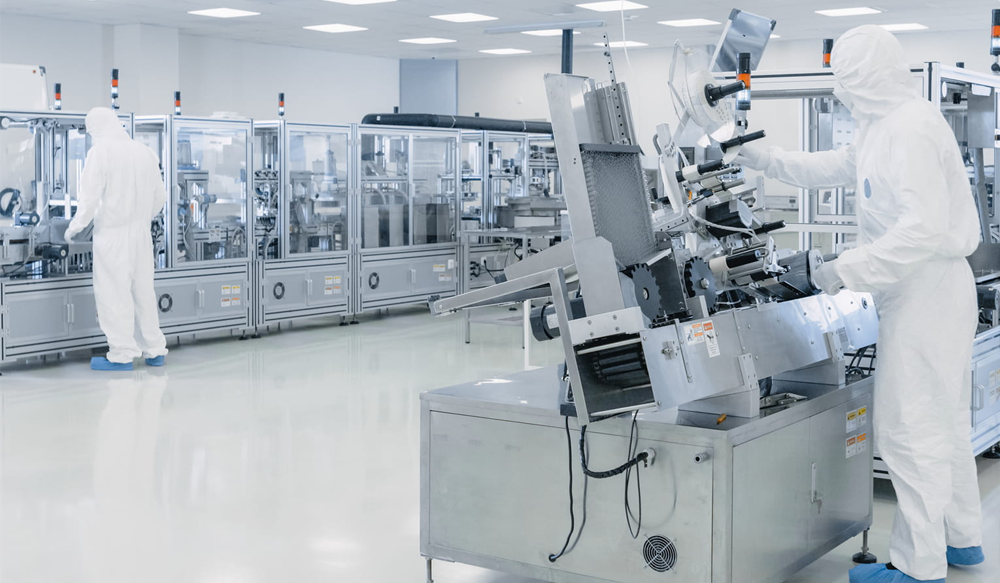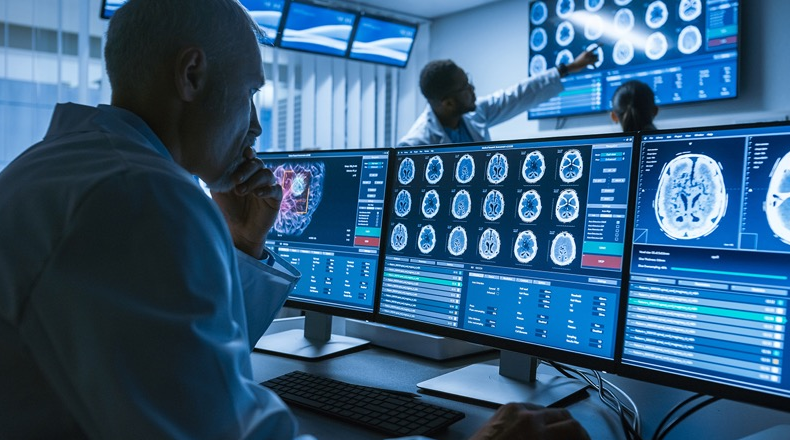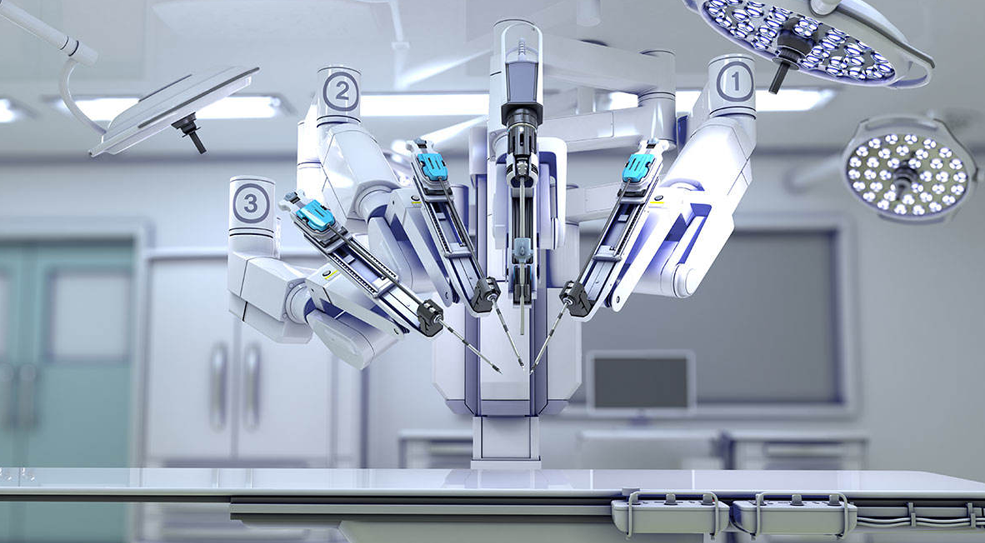The trend field of Data & AI is the home for data-driven technologies and enterprise solutions based on artificial intelligence. Key technologies in this field are computer vision empowering machines to read images, or natural-language processing enabling machines to interpret human speech.
With multimodal AI, another step has been taken to make AI-generated results more accurate. AI democratization is a new term for what used to be called “explainable AI”.
Machine learning is then key to process the data and enable machine-driven decisions. Reinforcement learning and knowledge graphs are only two principles that help machines become artificially intelligent.
With AI democratization, we refer to ways of making AI more accessible and more widely usable. Insurers benefit from more automated processes across the value chain.
What is new in the field of Data & AI?
Despite all the progress that AI solutions have made by 2022, artificial intelligence that can fully replace human intelligence, better known as “artificial general intelligence”.
Wellbeing as a trend field considers all technologies that are designed to make our lives healthier. We have started looking at preventive measures like health status monitoring via behavioral analytics and new solutions in digital healthcare.
Now that artificial intelligence, analytics and imaging technologies are being applied in the insurance sector, we are seeing more and more new approaches being developed.
According Munich Re Tech Trend Radar, personalized medicine or vaccine technologies for therapeutic purposes are exemplary state-of-the-art medical research fields.
1. Behavioral Analytics
Through social media, sharing and tracking personal information like the food on one’s plate, travel destinations or one’s own current mood is now quite common. In parallel, behavioral analytics tools have evolved and can now process more and more contextual information.
In healthcare, various digital tools such as mobile devices and wearables provide vast volumes of data which can be used for a more holistic health assessment and monitoring. Diabetes is one example of a disease that requires not only medication but a complete change in lifestyle adapted to the disease. In this case, behavioral data like step counting or food tracking, in combination with biosensors for blood glucose monitoring, can support the diabetic patient in managing everyday life.
Behavioral analytics become even more interesting for insurers when the risk for future health issues and diseases can be predicted based on behavioral data like lack of movement or too much social media consumption.
2. Digital Healthcare

Advanced technologies enable completely new ways of managing health and wellbeing.
Today, visiting a doctor is still a challenge. From initial symptoms, making an appointment with a doctor and afterwards with a specialist to get a diagnosis often takes weeks.
Game-changing technologies and digital services allow a much faster way of managing these steps and offer more innovative ways of monitoring health.
Symptom checkers, automatic appointment booking, video consultation and electronic prescribing will smoothen and shorten today’s processes. In fact, telehealth service use has already increased 38-fold compared to pre-Covid times. These digital health managers are restructuring the entire health and insurance infrastructure.
In addition, new biomarkers and wearables to track them allow a better way of monitoring health and indicate early risk factors. This helps to prevent diseases or treat them at a very early stage. Major advances in home care are being developed that will enable people to continue to live relatively independent lives at home in spite of medical needs. Soon, new care products will emerge, such as virtual and augmented reality for neurological disorders and the even more disruptive metaverse for all-round patient experience.
3. Biomanufacturing

The industrial production of a (bio) product, using biological organisms and systems such as cells for various industries from pharma to energy.
Biomanufacturing is nothing new. Fermentation is one key biomanufacturing process that is leveraged to produce various goods. The human protein insulin has been produced synthetically using bioprocesses since 1978. The success of mRNA vaccines, which are produced in a similar way, has shed light on advanced biomanufacturing for more fields of application in and outside the pharma industry.
Biomanufactured food alternatives have successfully made it onto the supermarket shelves. Foodtech companies reinvent products and processes to replace harmful food components like industrial sugar or artificial preservatives, or even produce slaughter-free lab-grown meat which could significantly reduce the carbon footprint of meat production.
An example in the field of recycling is nano-bioremediation. Bacteria or algae serve as catalysts to produce nanoparticles that can break down pollutants in the environment.
4. AI Medicine

AI use in medicine is largely adopted in drug discovery and development as well as in diagnostics and therapeutics.
In the field of drug discovery, AI has the potential to reduce the time taken for a novel drug to reach the market and to find new ways to tackle old diseases. Evotec, a German biotechnology company, brought a drug into clinical trials in just 8 months using Exscientia’s AI platform. Historically, this early step of drug development would have taken 4–5 years. AI also helps identify promising molecules and therapeutic targets. For drugs to be efficacious, they need to fit like a key into a lock to shut down the disease protein. Here, algorithms can be used to identify potential new drugs by screening millions of proteins and analyzing their structure and interactions.
Likewise, AI is used to analyze X-rays and other medical images to detect eye diseases, skin cancer, breast cancer, other forms of cancers, Alzheimer’s disease and more. It leads to milestones such as the U.S. Food and Drug Administration (FDA) clearing the KOIOS AI-powered software platform to help diagnose breast and thyroid cancer from ultrasound images in two seconds. Beyond image analysis, AI is applied to find patterns in patients’ symptoms or behaviors to identify disease earlier and with less invasive methods, or to prevent chronic conditions from worsening. AI can also be used beyond diagnosis to treat patients.
5. Personalized Medicine
A tailored medical therapy based on an individual’s genetic makeup, disease pattern, body constitution, gender, etc. that is enabled by technologies like next-generation sequencing (NGS), organ-on-a-chip (OOC), cell sorting or 3D-printed substitutional materials.
Immunotherapy for precise cancer treatment (e.g., Herceptin) has been one of the first treatments for personalized medicine, which has now moved to ultra-targeted therapies such as CAR-T.
Personalized therapy has now moved out of the realm of cancer and into genetic diseases such as sickle cell anemia or spinal muscular atrophy.
Currently in development are theoretically one-time curative treatments aimed at altering patients’ specific problematic DNA.
In addition, the trend towards personalized medicine in cancer continues and will require rethinking of the entire healthcare and value chain. Cancer will likely lead the way here, but other diseases will follow, especially with the adoption of cell and gene therapies which can be augmented by mRNA technologies.
6. Population Health

Population health refers to the health outcomes of a group, based on data of many individuals in defined populations such as nations, age groups, cultures.
It can encompass various aspects of wellbeing, including physical and mental, and divides based on different factors such as geography. By looking at a population’s health status, our healthcare systems can address common problems among individuals in a coordinated fashion.
There are various factors that enable management of a healthy population, including integrating and coordinating care, engaging patients, and setting appropriate value-based financial models.
Ultimately, this model aims to provide care in a proactive instead of the traditionally reactive manner. It can, for instance, analyze the population data to identify at-risk individuals and offer them preventive measures immediately.
7. Robotic Health

Cognitive AI in robotics looks promising for the use of robots in care, rehabilitation and prosthetics, as well as surgery.
Care robots today often fail with regard to accuracy in haptics and empathy in their responses to patients. The reason why robotics in healthcare is back in the spotlight is the investment in improving their abilities for soft grip and decision-making. Machine learning and cognitive automation in combination with hydraulic systems and natural-language processing (NLP) are key technologies in this field.
Exoskeleton robots that assist paralyzed patients are examples here. With the help of conversational interfaces and NLP, robots can interact on an emotional level, e.g., by making the elderly feel less lonely, while taking care of medication or monitoring their insulin level or blood pressure.
Moreover, robots are continuing to improve surgery. As robotic instruments become more accurate and reach more areas of the body, minimal invasive procedures in surgery can be applied more widely and thereby reduce risk.
8. Vaccine Technologies

New methods of producing safer and more effective vaccines in a faster and cost- effective way gained more attention during the COVID-19 pandemic and will impact more diseases.
Vaccines have been successful in limiting the spread of serious diseases like smallpox, diphtheria and polio. But vaccination against pathogens like influenza, tuberculosis, measles, malaria and HIV is not effective or widespread enough, due for example to the nature of the pathogen or anti-vaccine movements.
Most vaccines relied on attenuated live or denatured dead viruses, often produced in chicken eggs. This resulted in lengthy processes of limited capacity and effectiveness, especially when reacting to new variants.
The COVID-19 pandemic has resulted in a significant boost for new and potentially disruptive technologies for vaccines, just like mRNA, vector and recombinant subunit vaccines or nanoparticles. Some technologies not only had much faster development timelines, but their technology can also be used to create new and more effective preventive and even therapeutic treatments against a variety of diseases like tuberculosis, HIV or cancer.
9. Human Enhancement

People have always been trying to enhance their capabilities, be it mental or physical – in other words: the idea of human enhancement is at least as old as humanity itself.
This ranges from permanent modifications of the human body to regain healthier living, to wearable gadgets with the key goal of enhancing a healthy human’s performance. It is not without its ethical concerns, especially after technology breakthroughs like the transplantation of a pig heart into a human being in early 2022. At the same time, there have always been discussions around enhancing drugs in various contexts from sports to education.
Away from invasive technologies but still within the human enhancement realm are gadgets and wearables. These include brain-stimulating headbands that generate electrical pulses aimed at enhancing physical training, as well as power-boosting suits that enable the user to lift heavy loads.
As we humans begin adapting gadgets and expanding our human capabilities, it seems that science fiction scenarios of “post-humanity” are moving closer to reality.
…………………………….
Tech Trend Radar AUTHORS: Martin Thormählen, Chief Technology Officer Munich Re and Daniel Grothues, Head of Enterprise Architecture ERGO








